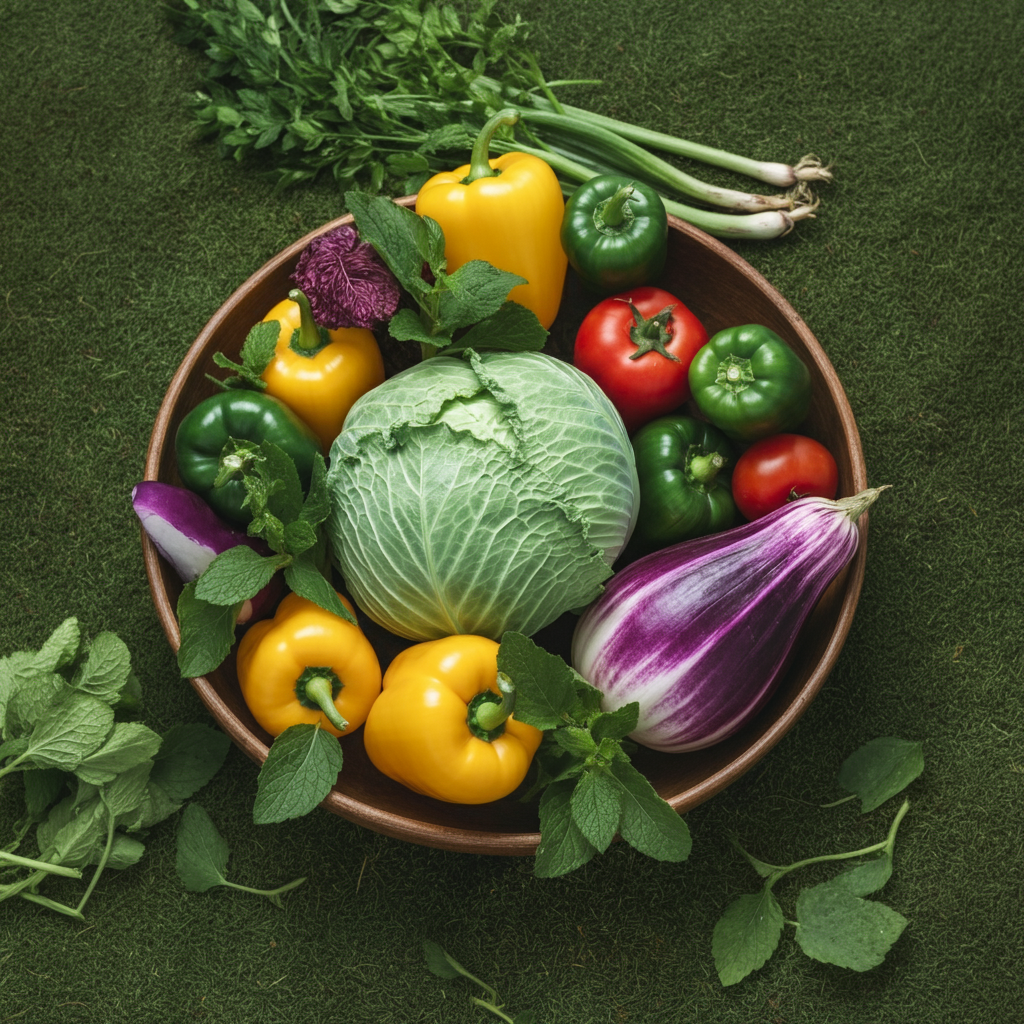When it comes to food, the familiar can feel comforting—but sometimes it’s worth stepping outside of your culinary comfort zone 10 exotic vegetables bring bold flavors, unique textures, and vibrant colors to your plate while expanding your knowledge of what the world’s produce has to offer. Many of these vegetables might already be staples in cuisines you’ve yet to explore or hidden gems waiting to be discovered at your local farmer’s market.
This blog will introduce you to 10 exotic vegetables from around the world, share tips for their preparation, and inspire you to incorporate them into your meals.
What Are Exotic Vegetables?
Exotic vegetables are not typically native to the region you live in. They may come from far-off countries or thrive in specific climates that make them uncommon in your local grocery store. These vegetables often boast unique flavors, shapes, or growing conditions, making them less conventional than everyday staples like carrots, potatoes, or lettuce.
Exploring exotic vegetables is not just about diversifying your diet—it’s about opening up your kitchen to new cultural influences and flavors. Plus, many of these vegetables are packed with nutrients, making them exciting and health-conscious choices.
Why Should You Try Exotic Vegetables?
If you need an incentive to swap out your everyday greens for something new, here are some compelling reasons to try exotic vegetables:
- Expand Your Culinary Horizons: Learn about new cuisines and how exotic vegetables are used globally, from soups to salads to stir-fries.
- Boost Nutrition: Many of these vegetables are rich in antioxidants, vitamins, and minerals you won’t often find in your usual diet.
- Sustainability: Growing underutilized crops can have a significantly lower environmental impact than over-farmed staple crops.
Curious about what’s out there? Let’s dig into our top 10 exotic vegetables and learn how to prepare them.
1. Romanesco (Italy)
Romanesco looks like something from an alien planet with its striking, light-green fractal pattern. This relative of cauliflower and broccoli boasts a nutty, slightly sweet flavor.
How to use it: Roast Romanesco with olive oil, garlic, and lemon for a simple side dish, or toss it into pasta for added crunch.
Health benefits: High in fiber, Vitamin C, and carotenoids.
2. Oca (Peru)
Oca is a South American root vegetable that comes in poppy pinks, oranges, and yellows. With a tangy taste similar to a mix between potatoes and lemons, it’s a versatile ingredient.
How to use it: Roast Oca in the oven or boil it and toss it in salads for its vibrant colors.
Health benefits: Packed with carbs for energy, as well as Vitamin C and potassium.
3. Bitter Melon (India)
Bitter melon has a unique appearance—bright green with ridged, bumpy skin—and a taste that adds a sharp, tangy bitterness to any dish.
How to use it: Stuff it with spices and bake it, or sauté thin slices in a stir-fry to pair with sweeter ingredients.
Health benefits: Used in traditional medicine, it’s known to regulate blood sugar levels.
4. Dragon’s Beard Kale (Japan)
Dragon’s Beard Kale is a rare Japanese vegetable featuring long, wispy, and tender green leaves. Sweeter and less bitter than traditional kale, it’s perfect for raw or cooked dishes.
How to use it: Toss it in a salad with sesame dressing, or lightly sauté it as a side dish.
Health benefits: An excellent source of Vitamin K and calcium.
5. Purple Yam (Philippines)
Known locally as “ube,” this bright purple root vegetable is a key ingredient in Filipino desserts like ube ice cream. It has a mildly sweet, nutty flavor.
How to use it: Mash it and use it as a base for desserts, or bake purple yam chips for a crunchy snack.
Health benefits: Rich in anthocyanins, which are antioxidants.
6. Chayote (Mexico)
Chayote, also known as vegetable pear, is a light green gourd with a delicate, slightly sweet taste and crisp texture.
How to use it: Add raw slices to salads for crunch, steam it for a side dish, or toss it into stir-fries.
Health benefits: Loaded with folate, fiber, and Vitamin C.
7. Lotus Root (China and Southeast Asia)
Lotus root is the edible stem of the lotus plant, recognizable by its striking floral cross-section and crisp, nutty flavor.
How to use it: Slice it thinly for a crunchy stir-fry or braise it in soy sauce and sesame oil for a savory side dish.
Health benefits: High in Vitamin C, fiber, and potassium.
8. Kohlrabi (Germany)
Kohlrabi, also called “German turnip,” is part of the cabbage family and has a mild taste similar to broccoli stems.
How to use it: Shave raw kohlrabi into a salad for a crisp texture or roast it with herbs and spices for a caramelized treat.
Health benefits: Rich in antioxidants and Vitamin B6.
9. Yardlong Beans (China)
True to their name, yardlong beans can reach up to 3 feet and have a mild, sweet green taste reminiscent of regular green beans.
How to use it: Stir-fry yardlong beans with garlic and oyster sauce for a quick and flavorful dish.
Health benefits: High in Vitamin A, folic acid, and manganese.
10. Fiddlehead Ferns (Canada and U.S.)
Fiddlehead ferns are coiled, young fern fronds with a grassy, earthy flavor not unlike asparagus.
How to use it: Sauté them with butter and garlic, or add them to pasta for a spring-inspired meal.
Health benefits: Packed with omega-3 and omega-6 fatty acids, as well as Vitamin A.
How to Source Exotic Vegetables
Finding 10 exotic vegetables might seem daunting, but it’s easier than you think:
- Visit your local farmer’s market for seasonal, fresh options.
- Shop at specialty grocery stores, particularly those focused on international or ethnic foods.
- Consider online retailers that ship fresh produce to your doorstep.
- Grow your own! Some exotic vegetables, like tomatoes or bitter melon, can thrive in home gardens.
Bring More Adventure to Your Plate
Exploring exotic vegetables is as much about the experience as it is about the taste. These lesser-known veggies are a window into vibrant cuisines and fresh flavor combinations. Whether you roast Romanesco, sauté fiddlehead ferns, or experiment with purple yam desserts, there’s something exciting waiting for you in each bite.
Start small—choose one or two vegetables from this list to incorporate into your next meal. And remember, food is a universal adventure. Who knows? Your new favorite dish might just include one of these exotic ingredients.
Tips for Cooking Exotic Vegetables
To fully enjoy the unique flavors and textures of exotic vegetables, it helps to know how to prepare them correctly. Here are some tips to get the best out of your culinary experiments:
- Understand the Flavor Profile: Take the time to research the flavor characteristics of the vegetable. For example, bitter melon is known for its sharp bitterness, which can be balanced with sweet or spicy ingredients, while chayote’s mild taste works well in both savory and sweet dishes.
- Use Fresh Ingredients: Exotic vegetables are at their best when fresh. Look for vibrant colors, firm textures, and avoid any signs of bruising or wilting.
- Experiment with Cooking Methods: Some vegetables shine when roasted, like Romanesco, while others, like lotus root, develop unique flavors and textures through braising or stir-frying. Don’t be afraid to try different techniques to find what works best.
- Pair with Complimentary Flavors: Pair exotic vegetables with complementary herbs, spices, and sauces to enhance their natural taste. For instance, try pairing dragon’s beard kale with a light sesame dressing or yardlong beans with a garlic and soy-based sauce.
- Start Simple: If you’re new to a specific vegetable, start with a straightforward recipe. This allows the unique essence of the ingredient to stand out without being overwhelmed by overly complex preparations.
Cooking with exotic vegetables is a rewarding experience that can enhance your culinary skills and broaden your flavor palette. With the right approach, these vegetables can quickly elevate your meals into something extraordinary.








